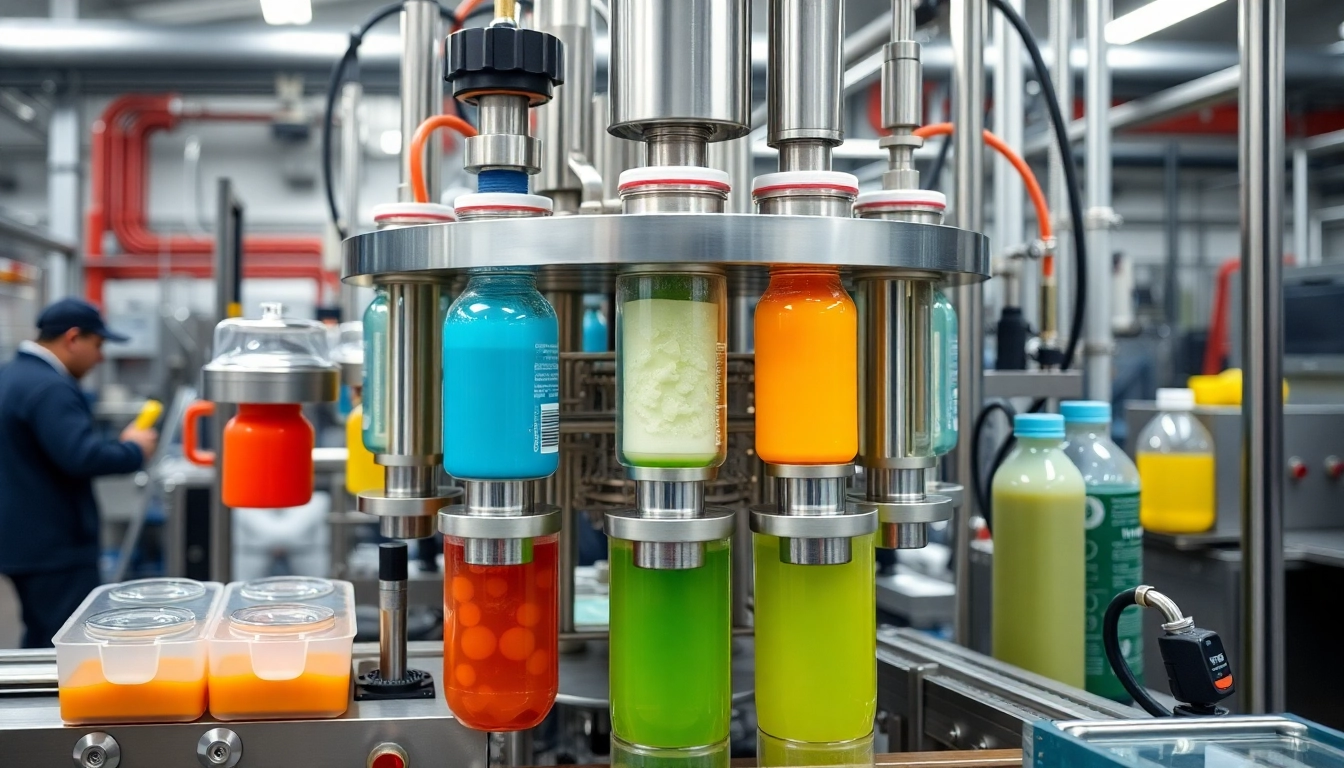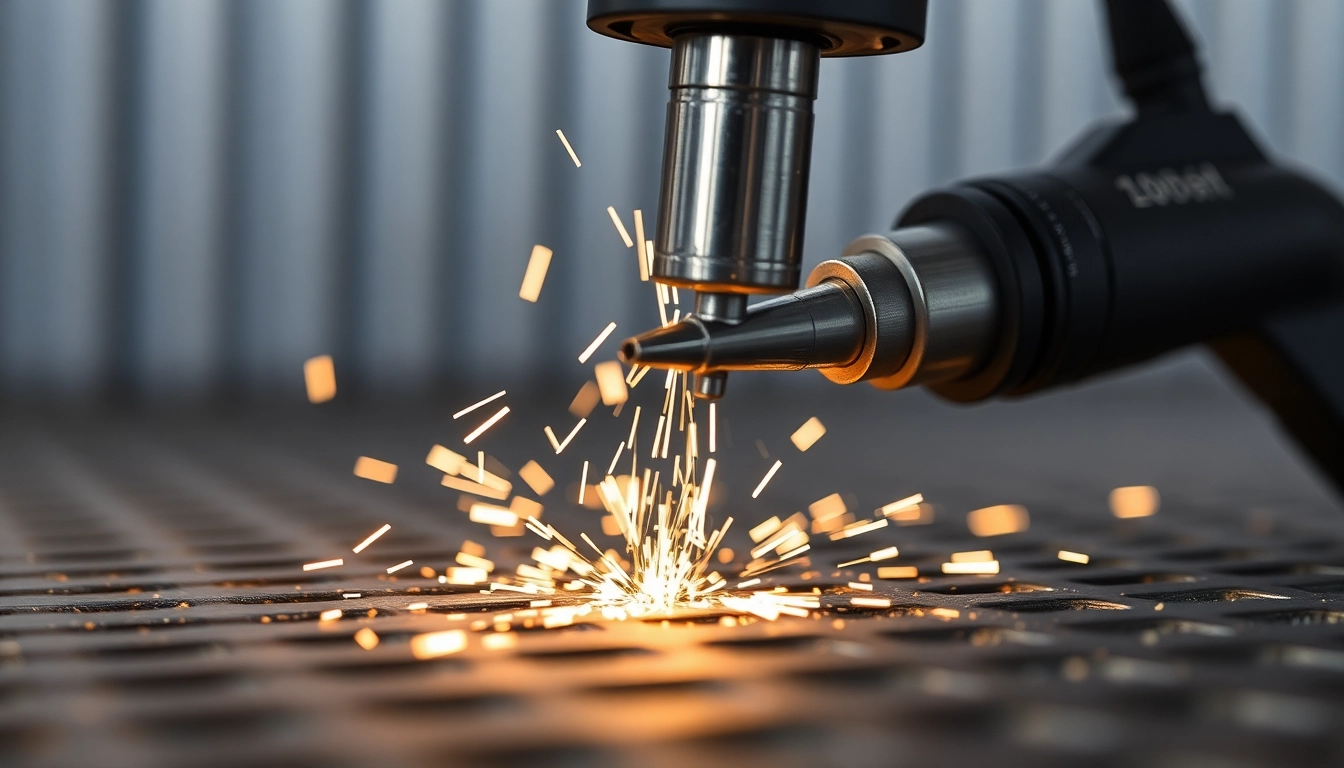Understanding Liquid Packaging Machines
In the realm of manufacturing and production, packaging plays an integral role in ensuring the quality and longevity of products, particularly liquids. Liquid packaging machines are specialized equipment designed to efficiently package liquid products ranging from beverages and sauces to pharmaceuticals and chemicals. As industries continue to evolve, identifying a reliable Liquid Packaging Machine Supplier can significantly influence operational success. This article explores the intricacies of liquid packaging machines, helping businesses navigate their options effectively.
What is a Liquid Packaging Machine?
A liquid packaging machine is a type of automated machinery used to fill, seal, and label containers with liquid products. It typically comprises several components, including filling heads, conveyor belts, and sealing mechanisms. These machines ensure accuracy in filling volumes, maintaining hygiene standards, and enhancing overall efficiency in the production line. The automation provided by these machines reduces human error, increases speed, and ensures a consistent output, which can be pivotal in industries where precision is paramount.
Types of Liquid Packaging Machines
Several types of liquid packaging machines are available, each tailored to meet specific packaging needs. Some of the main types include:
- Gravity Fillers: Ideal for thin liquids, these machines fill containers based on gravity. They are cost-effective but may not be suitable for every product.
- Pneumatic Fillers: Utilizing air pressure, these machines can handle viscous liquids and maintain the integrity of the product.
- Piston Fillers: Known for their precision, piston fillers are suitable for thick liquids and can be programmed for various volume settings.
- Vacuum Fillers: Commonly used in food packaging, these devices remove air from containers before sealing, extending shelf life.
- Time-Voltage Fillers: These machines use timed filling based on electrical voltage, providing high accuracy for consistent filling.
Industries Utilizing Liquid Packaging Machines
Liquid packaging machines are utilized across diverse industries, each demanding specific features based on their products:
- Food and Beverage: Companies in this sector require machines that prioritize hygiene, speed, and customization for various container sizes.
- Pharmaceuticals: Precision is crucial in this industry. Machines must meet stringent regulatory standards, ensuring safe and accurate dispensing of liquid medications.
- Cosmetics: Packaging machines must accommodate a range of viscosity levels and ensure that products are filled consistently without spillage.
- Chemicals: Sturdy machines are needed here to handle corrosive substances safely and efficiently.
Key Features to Consider
Customizability of Packaging Solutions
When exploring liquid packaging machines, customizability is a significant factor. Not all products are the same, and packaging requirements can significantly differ based on the product type and market needs. A top-tier supplier should offer adaptable solutions, allowing clients to modify machine settings (like fill volumes and speed) according to their needs. Additionally, custom solutions can accommodate unique packaging styles, including stand-up pouches, bottles, or jars, enhancing market appeal.
Automation and Efficiency Factors
Automation in liquid packaging machines leads to enhanced efficiency. Automated machines reduce labor costs, minimize downtime during operation, and offer higher output rates. Furthermore, they can often feature advanced technologies like sensors and monitoring systems, which improve accuracy and safety. Selecting a supplier that invests in state-of-the-art automation can yield long-term financial benefits for your business.
Cost-Effectiveness and Maintenance Needs
Investing in a liquid packaging machine goes beyond the initial purchase price. Companies should consider the total cost of ownership, encompassing maintenance requirements, operational costs, and potential downtime. A reliable machine should require minimal maintenance while providing long-term durability. Researching different suppliers’ warranties and service agreements will help determine the best option, ensuring your investment remains cost-effective over time.
Leading Suppliers in the Market
Comparison of Top Liquid Packaging Machine Suppliers
As the demand for liquid packaging solutions rises, several reputed suppliers have established their presence in the market. Here’s a comparative overview of leading vendors:
- Accutek Packaging Equipment Company: Known for its extensive variety of filling machines, Accutek focuses on diverse container types and product categories.
- Viking Masek: This supplier specializes in packaging machines adept at handling viscous liquids, offering a robust solution for food and personal care products.
- E-PAK Machinery: Focusing on cost-efficiency, E-PAK manufactures reliable liquid filling machines optimized for the bottling industry.
- Liquid Packaging Solutions: Their custom machinery is designed to meet the unique needs of each client, making them a versatile option in liquid packaging.
Customer Reviews and Feedback
Customer feedback plays a critical role in selecting a liquid packaging machine supplier. Prospective buyers should investigate user reviews and testimonials to gauge machine performance, reliability, and customer service. Popular platforms such as industry forums and business review websites can offer invaluable insights into the experiences of other companies with specific suppliers. Consistent positive feedback often indicates a reliable supplier, while negative comments may reveal potential issues worth considering.
Market Trends and Innovations
The liquid packaging industry is continuously evolving, with innovations emerging to improve efficiency and sustainability. Some current trends include:
- Sustainability Initiatives: Many companies are shifting towards eco-friendly packaging materials and processes, influencing machine design and operation.
- Smart Technology Integration: The incorporation of IoT technology allows for real-time monitoring and data collection, enhancing production efficiency.
- Flexible Packaging: With the demand for diverse product types, machines that offer flexibility in packaging formats are gaining popularity.
Implementation Steps for Businesses
Assessing Business Needs for Liquid Packaging
Before investing in a liquid packaging machine, businesses must assess their specific requirements, including product type, volume, and packaging needs. This initial assessment is critical to ensure that the chosen machine aligns with production capacities and industry standards. Engaging in discussions with production managers and stakeholders will help outline these needs comprehensively.
Choosing the Right Supplier
Selecting an appropriate liquid packaging machine supplier can influence operational efficiency and long-term satisfaction. Businesses should consider factors such as the supplier’s reputation, experience in the industry, breadth of product offerings, and customer service reputation. Additionally, arranging demonstrations or site visits can provide deeper insights into machine capabilities and functionality.
Integrating the Machine into Production Workflow
Once a supplier and machine are chosen, the next step involves integrating the packaging machine into the existing production workflow. This process may include training employees, adjusting existing systems for compatibility, and ensuring that all equipment meets safety regulations. Effective integration can minimize transition difficulties and enhance productivity during the adaptation phase.
Performance Indicators and Best Practices
Measuring Packaging Efficiency
To determine the effectiveness of a liquid packaging machine, businesses should establish key performance indicators (KPIs). Metrics such as fill accuracy, speed of operation, downtime, and maintenance frequency can provide critical insights into the performance of the packaging system. Regular evaluation against these KPIs allows organizations to identify areas for improvement and address potential issues proactively.
Best Practices for Machine Operation
Establishing best practices for operating liquid packaging machines can enhance efficacy and safety. Recommendations include:
- Regular training sessions for operators to ensure familiarity with machine functions and maintenance.
- Adhering to manufacturer guidelines for operation and cleaning to maintain compliance and longevity.
- Setting a maintenance schedule to address potential issues before they escalate.
Long-Term Maintenance and Upgrades
Investing in long-term maintenance and periodic upgrades can extend the life of your liquid packaging machines significantly. Machinery often features advancements and software updates that enhance efficiency or expand capabilities. Planning for regular maintenance, including inspections and necessary repairs, can prevent unexpected downtimes, ensuring uninterrupted production and optimal performance.



